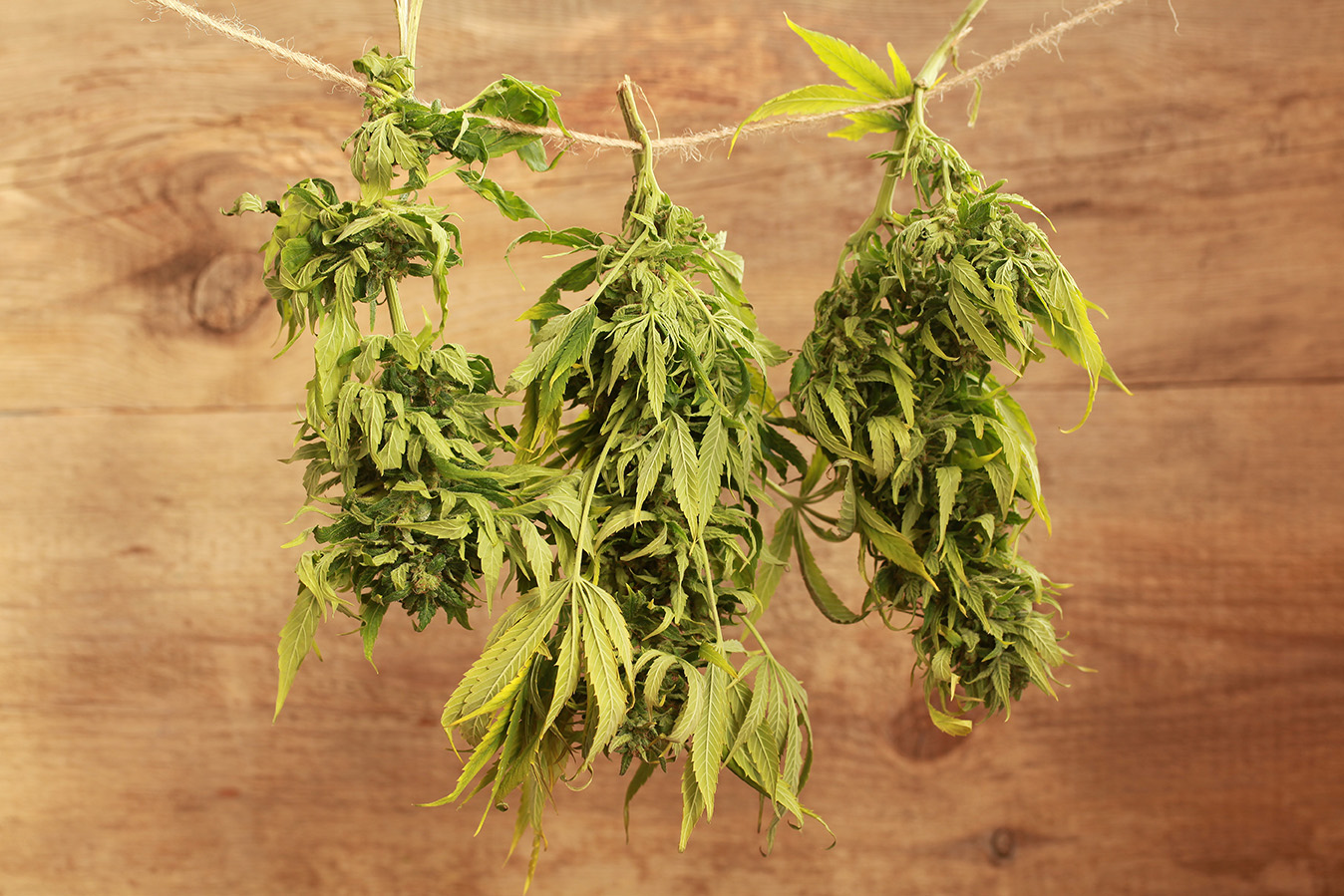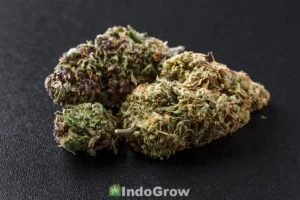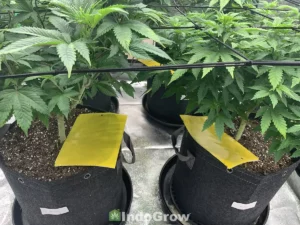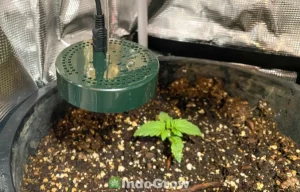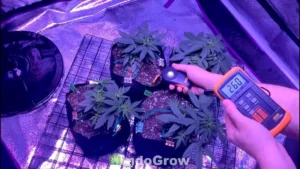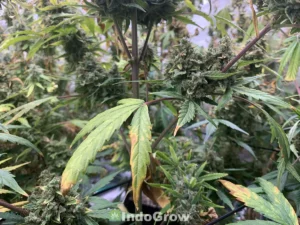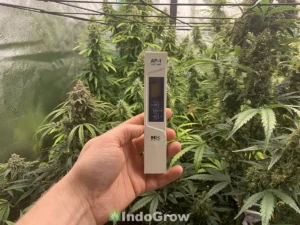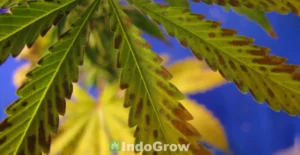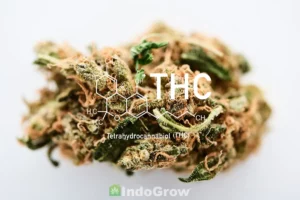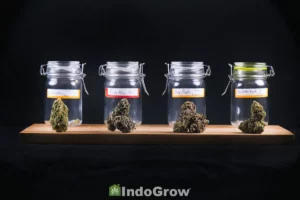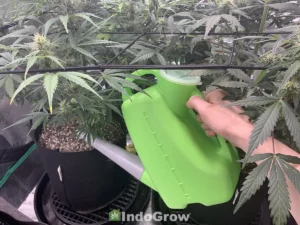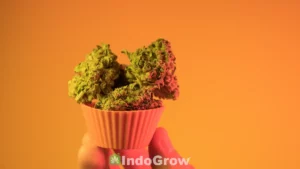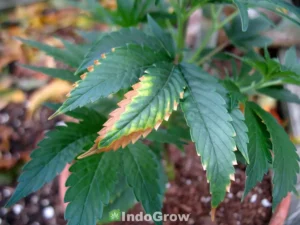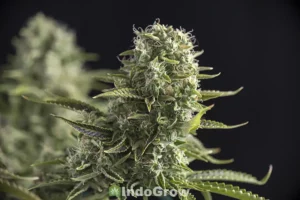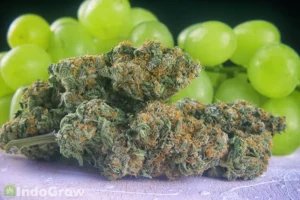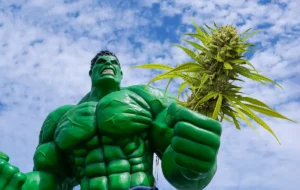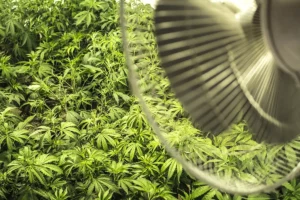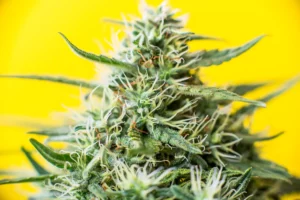Learning the best way to dry weed is a vital step to producing a high quality harvest. The terpenes and other structures that deliver smooth smoke, tasty flavors, and psycoactive effects can be severely degraded if not dried properly.
Drying fresh cannabis in the open air should use up most of its moisture, leaving only the frosty buds behind, brimming with eye-popping resin. The timing, methods, atmospheric conditions, and even the location significantly impact the final quality of the crop, which is why a detailed guide to the best way to dry weed could be the difference between a crop that doesn’t deliver and the best harvest of your career.
Table of Contents
- How to Set Up a Cannabis Drying Room
- How Dark Should a Drying Room Be?
- What Temperature Should a Drying Room Be?
- What Humidity Should a Drying Room Be?
- Best Way to Dry Buds After Harvest
- How to Hang Dry Cannabis
- How to Rack Dry Cannabis
- Drying Room Equipment
- Should You Trim Cannabis Before Drying It?
- How Long Does It Take to Dry Cannabis?
- How to Cure Weed After Drying?
- Summary
How to Set Up a Cannabis Drying Room
Many growers are limited by space when setting up a drying room for their cannabis crop. They may wonder how to dry weed in such restricted conditions. But the best way to dry buds after harvest is more dependent on the room’s conditions than the type of room it is. The ability to control temperature, humidity, light, and air allows growers to create optimal conditions for drying crops in any room.
This means that bathrooms make good drying rooms. So do temperature-controlled grow tents and closets. Any room can become a drying room with the right setup, so long as it’s relatively small and well-equipped. The necessities include a drying rack, a way to measure humidity and temperature, a fan or A/C unit, and a humidifier.
Note that even though cannabis is only being dried, not smoked, the drying room you choose will smell strongly of cannabis. If discretion is needed for your situation, it should play into your decision-making process when choosing a room.
How Dark Should a Drying Room Be?
Drying rooms need to be kept dark because buds begin degrading when exposed to light. It’s essential to choose an enclosed drying room either without windows or with covered windows that keep out light.
Unnatural light like from a lightbulb should be safe for occasional check-ins, but checking the crop too often and over-exposing it can result in a lower quality harvest. Intrusive light can also raise the temperature and change the humidity, so keep the room’s lighting as controlled as possible to ensure that it doesn’t affect your crops.
What Temperature Should a Drying Room Be?
Drying rooms should be around 60-70 degrees Fahrenheit for optimal drying conditions. A hygrometer can be bought relatively cheaply to keep track of the room’s atmospheric vitals, including humidity (see below). This is why we recommend a small room for drying – the bigger the space, the more difficult it will be to control the conditions.
On that note, some rooms can fluctuate in temperature too drastically to be viable drying rooms. This can be due to a room’s location in the house, the quality of its windows, the materials of the walls, and the quality of its circulation. Use a hygrometer/thermometer to monitor a room’s temperature over a whole day to check for fluctuations before choosing it as a dedicated drying room.
What Humidity Should a Drying Room Be?
A drying room should have a humidity level of between 45-65%. This is to ensure that the buds dry slowly without losing their potency. These levels can vary depending on the source you consult, with some growers saying that anything below 50% is dangerous for a healthy crop. We recommend keeping the drying environment as close to 60% as possible for optimal results.
Growers often wonder why humidity matters so much in the drying process. The best way to dry weed is to keep the moisture levels controlled because too much can cause an outbreak of mildew or mold on your hard-earned buds. Too little moisture can cause crops to dry out into brittle, flavorless buds. Optimal humidity allows buds to dry slowly and naturally while preserving their flavors.
Best Way to Dry Buds After Harvest
The best way to dry marijuana is to provide the best conditions for the bud to retain its structure and flavor depending on the drying space you have available. This means that the two main ways to dry cannabis, hang drying or rack drying, could have different implications depending on the conditions of the space.
The required labor also differs between the methods, meaning growers could be more or less suited to each depending on their schedules. Below, we dive into each of the two methods to help growers choose the ideal drying strategy for their setup.
How to Hang Dry Cannabis
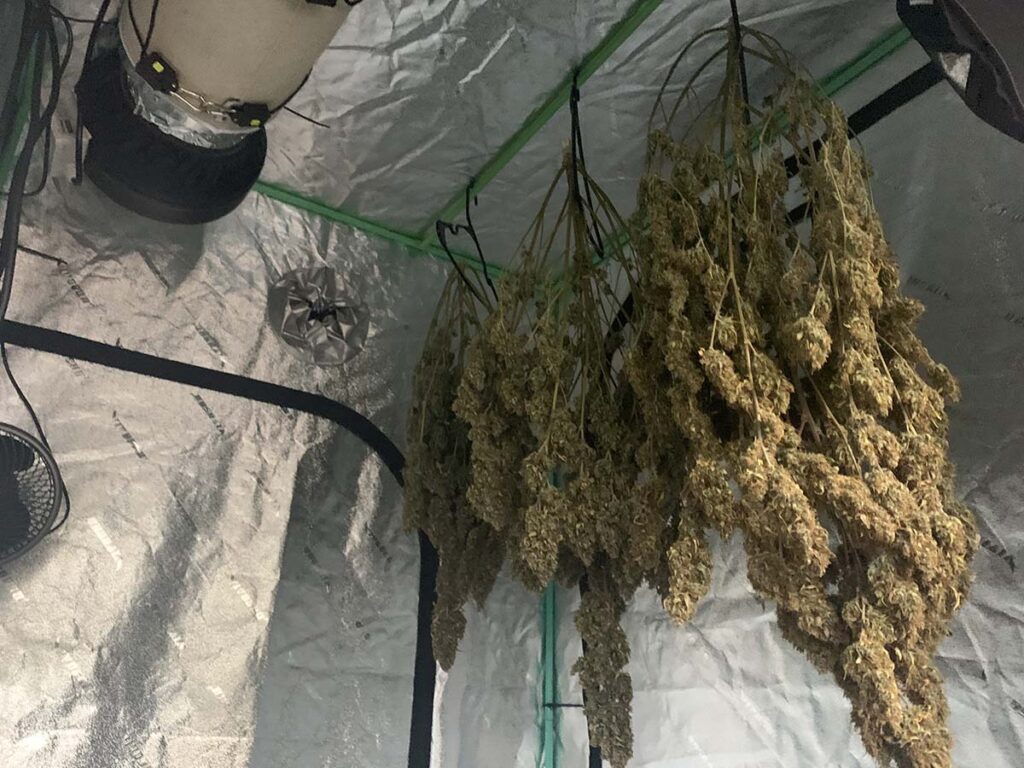
Hang drying cannabis is the least labor-intensive of the drying methods. In this method, growers either chop and hang the whole plant or hang individual branches. The branches are hung upside down with all buds still attached.
Many growers prefer the hang drying method because they don’t have to remove each bud first or worry about flipping the buds. However, the main limitations of this method are drying time and the space required.
Since more of the plant has to dry, including the branches and stems, it takes longer than the rack drying method. If you’re not pressed for time, this is a good thing since a slower, controlled dry can result in better quality.
Additionally, drying whole branches or plants takes up considerably more space, making many growing spaces inadequate for this process. If you’re short on space, the rack drying method is probably your best bet.
Hang dried buds are typically ready in 5-7 days in optimal conditions. Bend a stem and if it snaps, it’s ready. If it bends with no snap, then give it some more time.
How to Rack Dry Cannabis
Rack drying cannabis involves removing each individual bud and laying it on a flat, circular rack. These racks are made of mesh to allow air to pass through and dry the buds – simply laying them on a table or other solid surface will result in uneven drying and lower quality buds.
Even though the racks are made of mesh to allow for proper air flow, it’s still recommended to flip the buds daily. Otherwise, your buds will be flat on one side and may not dry evenly.
Rack-dried buds are typically ready in 3-4 days in optimal conditions. The faster drying is due to the absence of branches and stems that release extra moisture. This method best suits growers with limited drying space.
Drying Room Equipment
Drying room equipment should be optimized to make the most of your available space. This depends on the needs of the room as well as the drying method chosen. For instance, whether a room needs a drying rack or a hanging line depends on whether the cannabis will be rack-dried or hang-dried.
If using the hang-drying method, any type of hanging line or rod will suffice. I recommend using clothes hangars regardless of location. Otherwise, resin will get everywhere.
If using a bathroom, the hangars can be hung from the shower rod and then the branches hung from the clothes hangars. In a closet, the existing rod can be used. If using a grow tent to dry, simply hang the clothes hangars from the rods at the top of the tent and hang the limbs from the hangars. Note that the lights will need to be removed from the tent when drying.
Drying rooms also need special equipment to maintain optimal drying conditions. This includes a thermometer, hygrometer, air conditioner, and humidifier. To keep the air flowing, a small oscillating fan is also recommended. Do not point the fan directly at the buds, however, or they will dry out too fast.
Should You Trim Cannabis Before Drying It?
As a general rule, trimmed buds dry more quickly so precautions need to made so they don’t dry out too fast. Untrimmed buds, however, have a greater potential to develop mold and mildew.
Trimming involves removing the leaves and stems from the plant. Sometimes, buds are dried first before trimming while others are trimmed while wet. This changes how long they take to dry, which can improve the flavor, but it can also lead to mold growth. Choosing whether to trim or not depends on personal preference and the conditions of the grow space so experimentation may be needed.
Most growers remove all fan leaves prior to drying regardless of drying method. This improves air flow and reduces the likelihood of mold. Sugar leaves are typically left on during the drying process and trimmed only after the plant has completely dried. This is because the sugar leaves are covered in THC-containing trichomes and can be used to make hash or edibles along with the smaller “popcorn” buds.
How Long Does It Take to Dry Cannabis?
Drying generally takes around 3-7 days to complete, though temperature and humidity levels can affect this. It’s important to closely monitor the conditions in your grow room so mold doesn’t develop or your buds dry out too fast.
Hang drying typically takes 5-7 days while rack drying takes 3-4. Trimmed buds will be on the low end while untrimmed buds will take longer.
Drying your buds too fast will result in harsher smoke and less desirable flavors. Leaving the plant undisturbed and allowing to dry slowly is the best way to maintain the taste and quality of the finished product.
How to Cure Weed After Drying?
Curing cannabis goes hand-in-hand with drying to achieve the best quality harvest. Curing involves placing the dried and trimmed buds in airtight containers to prevent further loss of moisture after drying. This preserves the flavor, aroma, and physical structure of the buds to maintain optimal quality. Uncured cannabis can have harsh smoke and an unpleasant flavor.
Most growers like to use glass Mason Jars for curing since they are affordable and airtight. The curing process usually takes from two to four weeks after drying. It impacts the flavor of the cannabis by preventing degradation of the terpenes and shielding against mold.
It’s important to “burp” each jar periodically in the first couple weeks, which is simply opening the jar to let fresh air in. Get more detailed curing information by checking out How to Cure Cannabis.
Summary
The best way to dry weed is to set up a drying room with equipment to control temperature, humidity, air circulation, and light exposure in the room. Choosing the right room is key to beginning the process, but the choice of drying method is just as vital to preserving the flavor and integrity of the buds.
Whether drying on a rack or hanging from a line, cannabis needs to be left alone while it dries to minimize light exposure. The time it takes cannabis to dry varies based on the conditions and drying method, but growers typically aim for around 3-7 days of drying. Faster drying can reduce the chance of mold forming but longer drying often improves the flavor.
After drying, cannabis should be cured to preserve its flavor and structure before use. This is often achieved with airtight glass jars that prevent further loss of moisture. The curing process is an often overlooked yet essential step in the drying process as it optimizes and preserves bud quality.
The drying process is crucial to preserving the flavor, aroma, and texture of newly harvested cannabis. There are advantages to each drying method and the principles of optimum temperature, humidity, and light exposure remain the same for both. Quicker isn’t usually better and maintaining the right drying conditions should be the priority, no matter how long it takes.

Rocky Horton
Author
Rocky Horton is an experienced cannabis grower and the founder of IndoGrow. The IndoGrow editorial team has over four decades of combined growing experience. Learn more.

